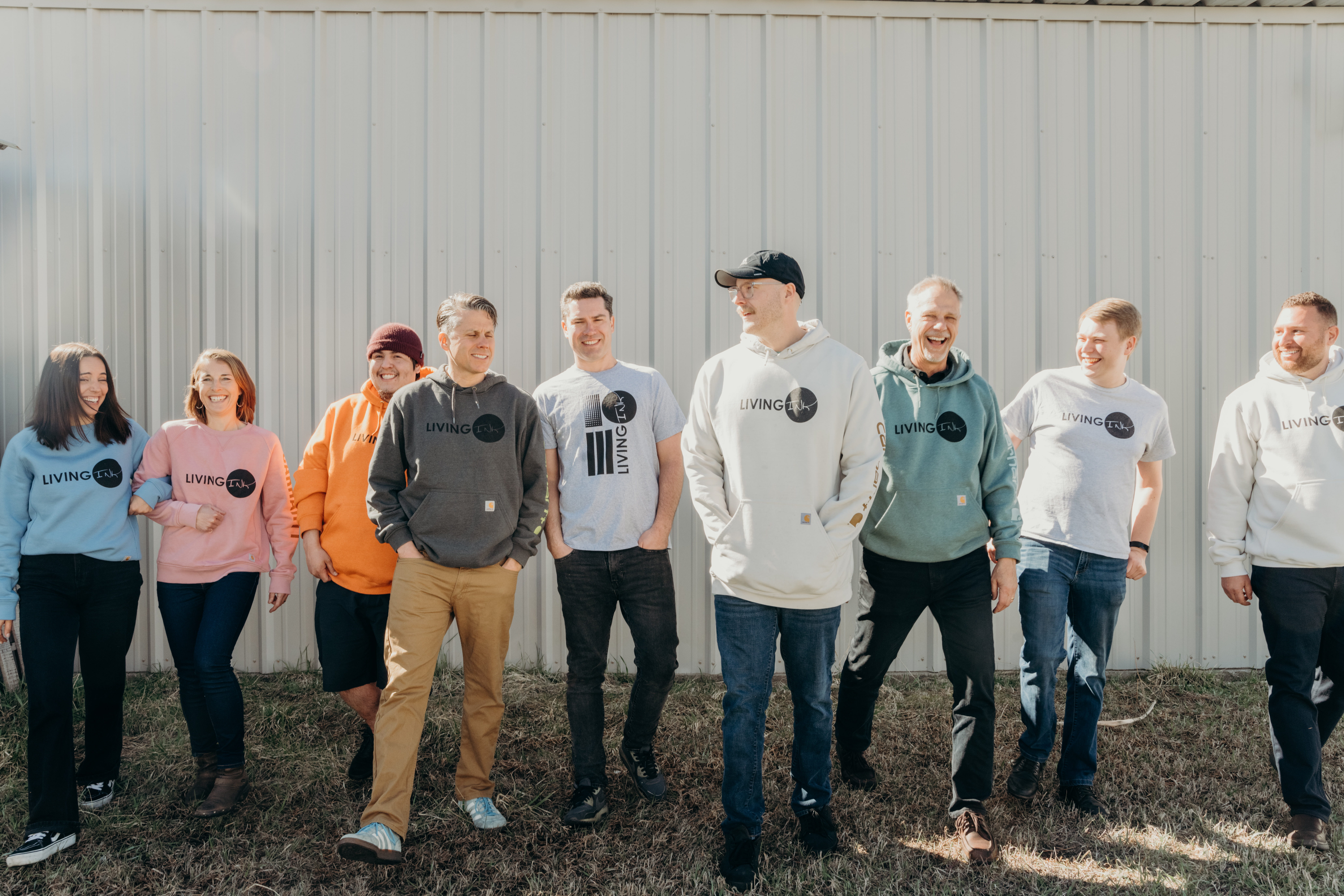In Conversation with Renewcell: The Innovator Turning Worn-out Clothes into Next-gen Materials
Tricia Carey, Chief Commercial Officer at Renewcell. Image by Renewcell.
23 November 2023
Can you tell us about Renewcell, how it started and what the organisation does?
Renewcell started 10 years ago, from KTH University in Stockholm. We recycle textiles in order to make a dissolving pulp, which is then used by fibre producers to make viscose, modal, and lyocell. So we are recycling cotton-rich textiles, and we’re able to use this dissolving pulp in existing machinery. We use 100 percent recycled textiles to make our dissolving pulp, which we brand as Circulose®. It is recyclable again, and it is a next-gen solution that is available now.
What problem is your innovation solving?
The problem we are solving in the industry today, is the enormous amount of textile waste that it’s not being reused. Less than 1% of textiles are being reused. We see this continued consumption from consumers and where do all the clothes go at the end? We can’t just say they go away anymore. They have to go somewhere. And with policy coming into place, there need to be solutions that are scalable and that will solve the mounting textile waste that is coming to landfill. So what we are solving is what can be done with cellulosic waste garments, and we are addressing this in a circular way, where we are closing the loop. And this hasn’t been done before, so we are actually closing the loop between collectors, sorters, processors, and we are a recycler that then can bring this cellulose back into the cycle. So we are able to work with suppliers in order to make great denim knits, wovens, a variety of different products, any of those that use manmade cellulosic fibres. But also we need to look at ways that we can replace cotton or even enhance mechanically recycled cotton. There are a lot of options in the market for where viscose made with Circulose® can actually end up.
Can you explain how Renewcell technology works?
We take post-industrial and post-consumer waste, we work with qualities that are 90-95% cellulose from cotton, and we can manage spandex as well as synthetics. We do not disassemble garments. What we do is, first, we go through a mechanical shredding process: here we remove buttons and zippers. After we have been through this process, there’s a wet process. And in that we are actually able to separate the fibres, as well as remove any of the dyes. We have no problem managing indigo, denim is actually an excellent feedstock for us. And then we take that slurry, and we press it into a pulp, and that’s what we brand as Circulose®, our dissolving pulp, which is then sold to fibre producers around the world. Majority of the man-made cellulosic fibre producers are based in China, so we ship the pulp from Sweden to China. Our Circulose® pulp is then blended with wood pulp at different ratios. So now we’re seeing ambition’s getting up to 50 percent blend, which means more circularity brought in, and in blending the pulp the fibre is developed. The fibre is then sold to yarn spinners, that’s then used through knitting, weaving, and continuing into garment making.
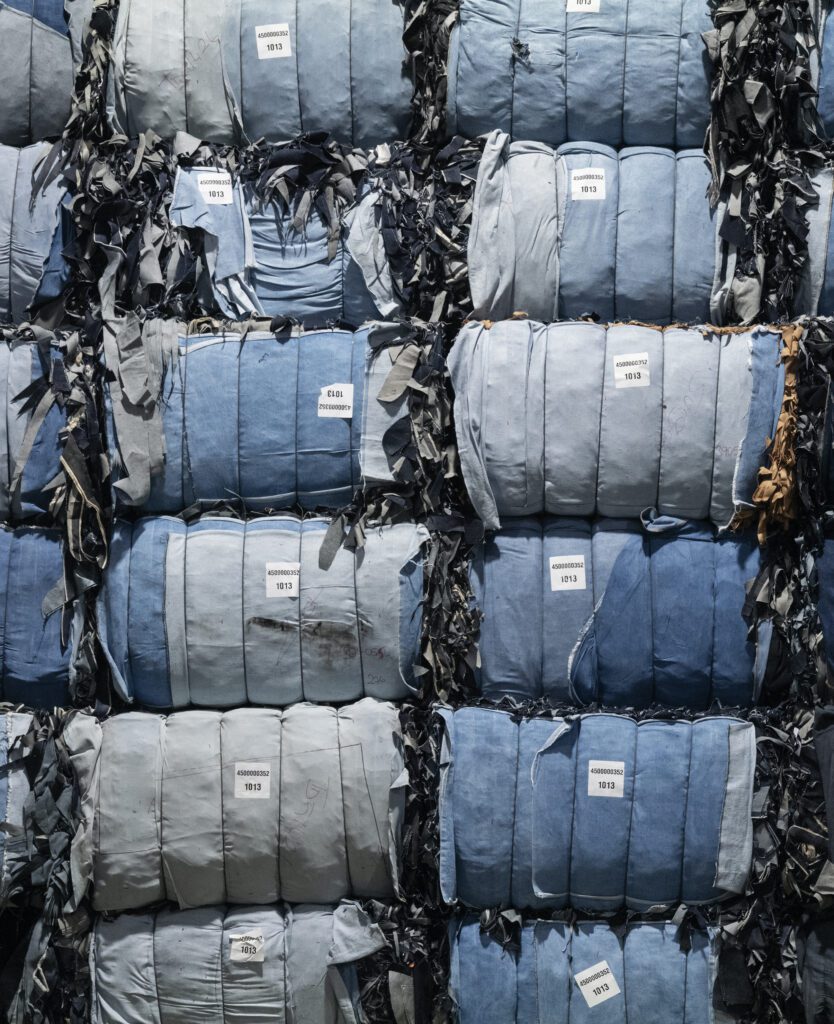
Image by Renewcell.
What have been the biggest successes so far?
Some of the biggest successes so far have been being able to work in collaboration with the industry. We work with brand partners like H&M, Inditex, PVH, Levi’s, BESTSELLER, as well as brands like Reformation, PangaIa, Triarchy, and Filippa K. And we’ve been able to provide accessibility, quality, and value to the market in bringing this new material. So with accessibility, we work with a variety of suppliers, such as fibre producers as well as yarn spinners, knitters, weavers, and denim producers that have qualities available now within our circular supplier network. We also have established a strong quality and an improvement in quality, it’s always about how we can progress in the industry right now. And we’re able to offer this at a value that is right for customers in order to scale and bring more circularity to the market and make fashion circular.
What role does collaboration play in bringing innovations to scale?
Collaboration is essential. It has been a big part of our journey to reach where we are today. Collaboration happens within the entire supply network. We no longer have to look at things as linear. It has to be a circular way forward. Collaboration means we all have to come to the table. We all have to give and take in order to make a difference and have this transition to go forward.
How has Fashion for Good played a role in your journey so far?
Fashion for Good has been an essential part of the development of Renewcell and Circulose® over the past 10 years. Fashion for Good has really been the place and space for us to be able to connect with people to have an outside voice and to bring new experiences into what we need in order to progress.
What’s next for Renewcell?
We continue to scale our production facility, which we opened in November of 2022. We’re reaching up to 60,000 tons, and then our next level is to get to 120,000 tons of Circulose® pulp. We continue to do this and bring programs into the market. We want to communicate and educate, within the industry, as well as to consumers around circularity and what Circulose® stands for. So what’s next for us is that we continue to grow, but we can only do this through the collaboration and commitment of retailers and brands, as well as the value network.
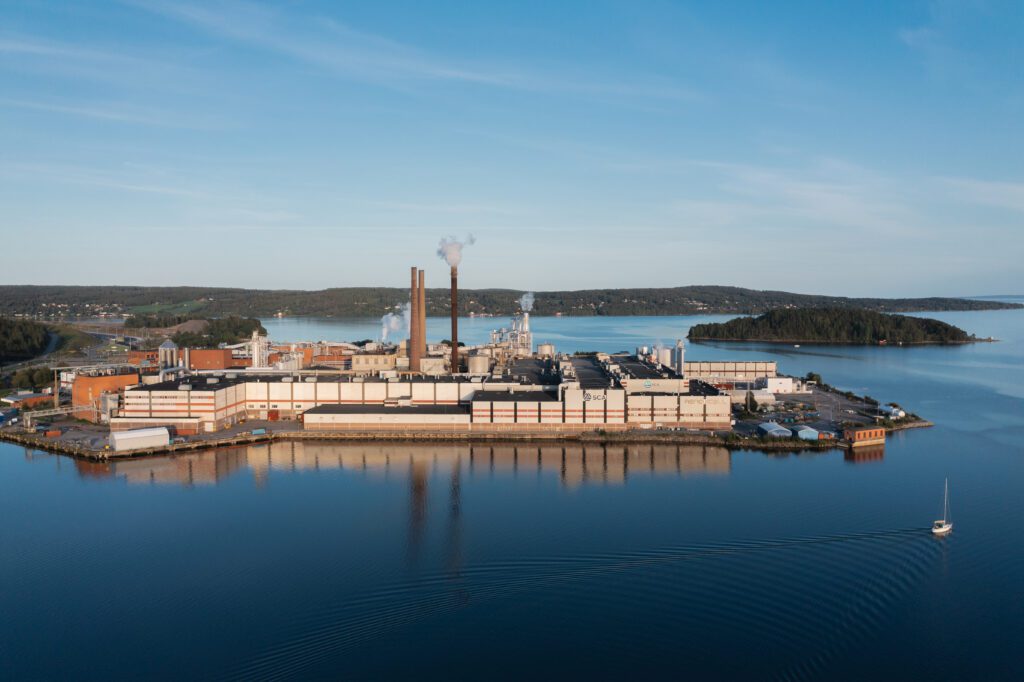
Image by Renewcell.
Lastly, what advice would you give consumers trying to be more sustainable?
Consumers who want to be more sustainable need to do a little bit of homework, and they need to support the brands that are carrying forward the right products. Consumers need to be very curious and try to understand what is happening and they need to also be able to voice their opinion of what they need, so that more sustainable products can come into the market.
Video Interview
Other Articles
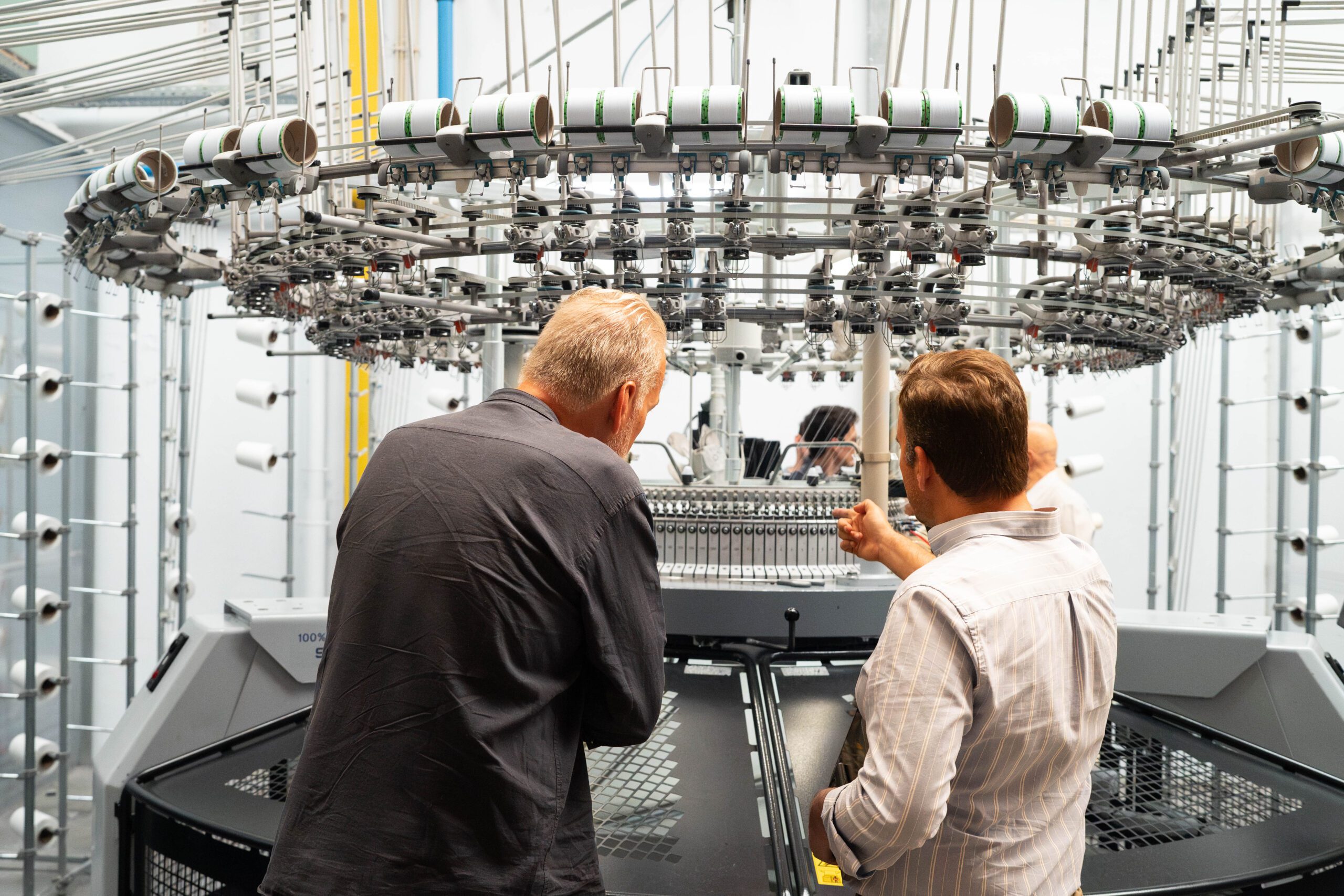
In conversation with Smartex: Explore Smartex’s AI-driven solutions transforming quality control and reducing waste
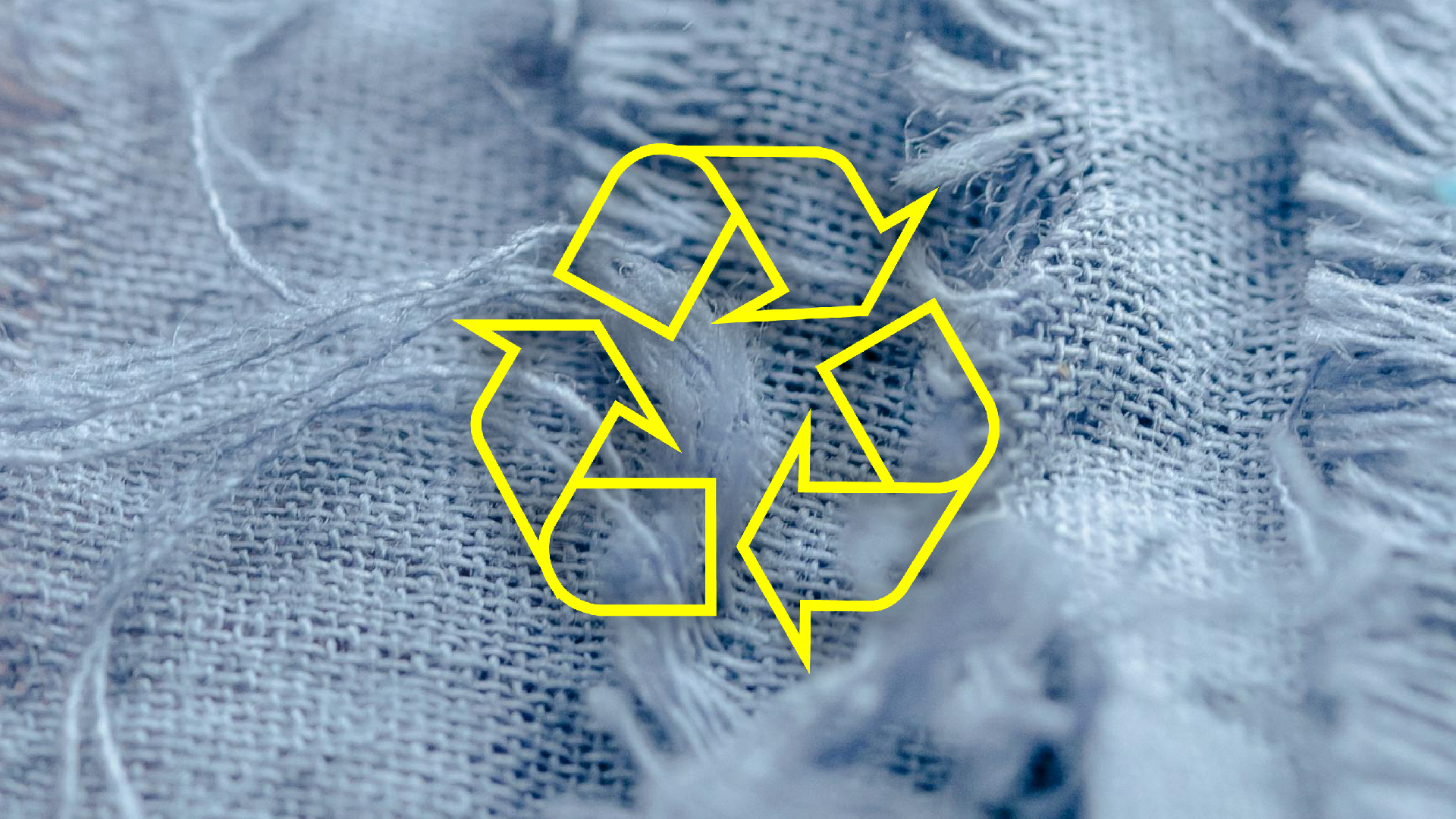
Fashion for Good and Textile Exchange Team Up to Trace Textile Waste
